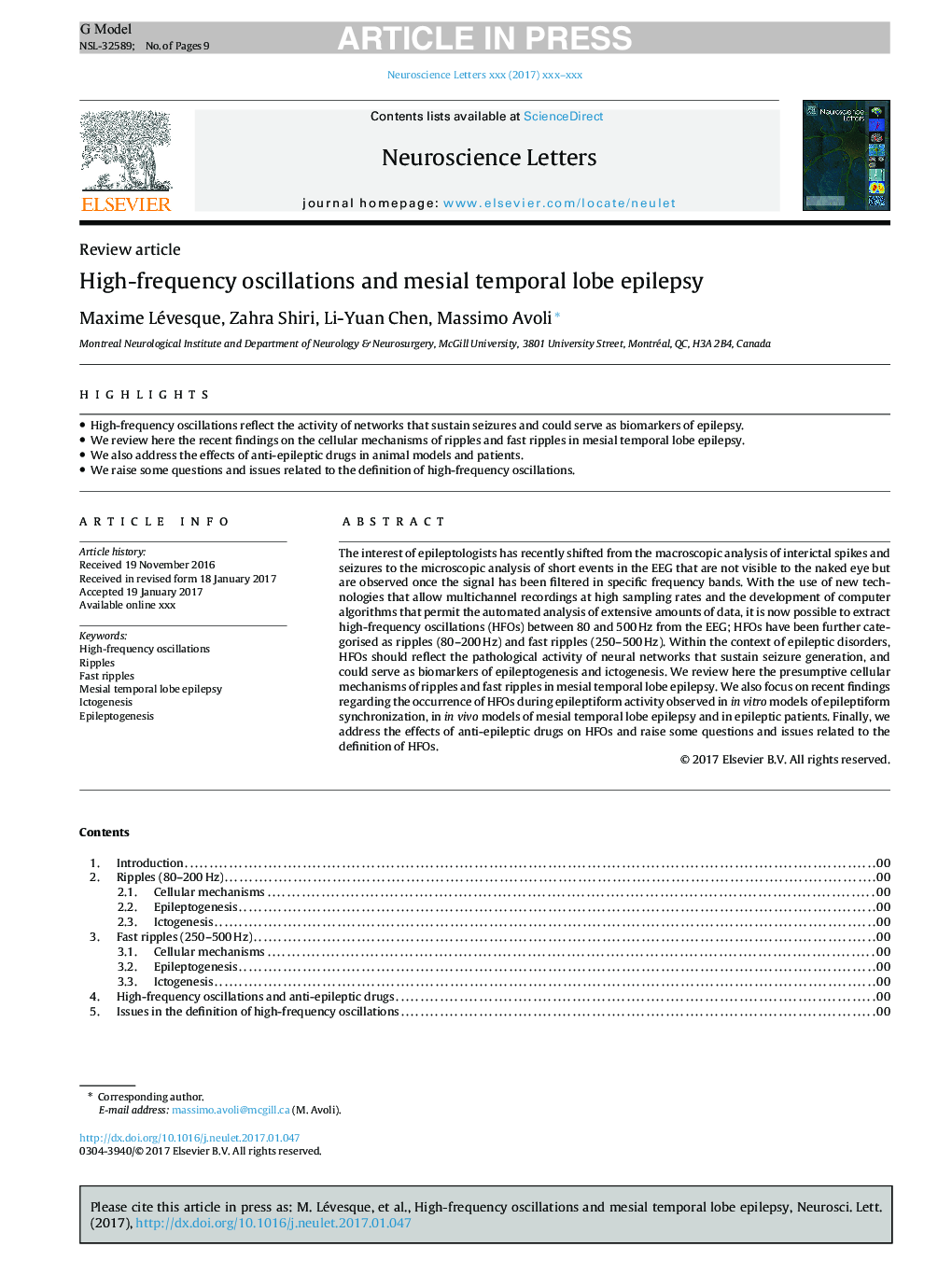| Article ID | Journal | Published Year | Pages | File Type |
|---|---|---|---|---|
| 8841787 | Neuroscience Letters | 2018 | 9 Pages |
Abstract
The interest of epileptologists has recently shifted from the macroscopic analysis of interictal spikes and seizures to the microscopic analysis of short events in the EEG that are not visible to the naked eye but are observed once the signal has been filtered in specific frequency bands. With the use of new technologies that allow multichannel recordings at high sampling rates and the development of computer algorithms that permit the automated analysis of extensive amounts of data, it is now possible to extract high-frequency oscillations (HFOs) between 80 and 500Â Hz from the EEG; HFOs have been further categorised as ripples (80-200Â Hz) and fast ripples (250-500Â Hz). Within the context of epileptic disorders, HFOs should reflect the pathological activity of neural networks that sustain seizure generation, and could serve as biomarkers of epileptogenesis and ictogenesis. We review here the presumptive cellular mechanisms of ripples and fast ripples in mesial temporal lobe epilepsy. We also focus on recent findings regarding the occurrence of HFOs during epileptiform activity observed in in vitro models of epileptiform synchronization, in in vivo models of mesial temporal lobe epilepsy and in epileptic patients. Finally, we address the effects of anti-epileptic drugs on HFOs and raise some questions and issues related to the definition of HFOs.
Keywords
Related Topics
Life Sciences
Neuroscience
Neuroscience (General)
Authors
Maxime Lévesque, Zahra Shiri, Li-Yuan Chen, Massimo Avoli,
